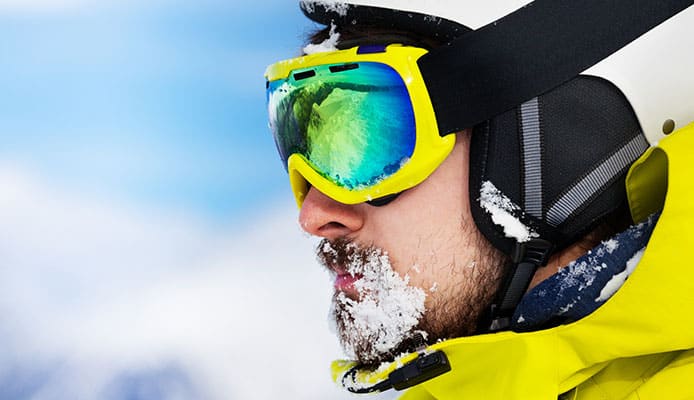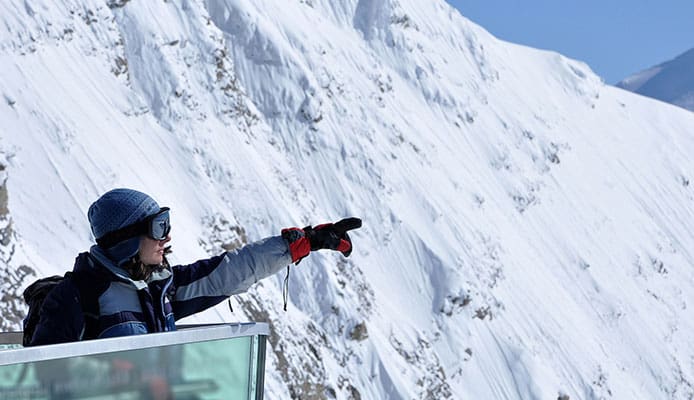
Skiing and snowboarding are two exciting winter sports that require the use of the right gear for your comfort and safety. Among others, goggles are some of the most important from the ski and snowboard gear must-haves. They protect the eyes from snow, UV rays, and wind. They improve vision to see every twist and turn.
There are several factors to consider when choosing the best goggles for skiing and snowboarding, including fit and overall construction. The options are plenty but do not see this as an excuse to decide in haste.
Need help choosing ski goggles? Read the rest of this post and learn from the insights we’ll share. Let’s dig in!
Find the Perfect Fit
Regardless of what you wear when skiing, including ski goggles, one of the most important is the perfect fit. Otherwise, you will end up being uncomfortable and this will harm your performance.
First, you need to start considering the size of your face. Women have smaller faces than men, so consider this when choosing the right size.
Ski goggles with a small fit are perfect for children or youth. Medium fit, meanwhile, is for adult users with a medium-sized head. Large or oversized fit has a larger lens space and field of vision. Whether horizontally or vertically, it allows you to see more.
You will also find ski goggles that are specifically made for Asians. The Asian fit is for those with low nose bridges and high cheekbones. The anatomy of the face of Asians is different from most nationalities, so they need goggles especially designed with their requirements in mind.
Mind Your Comfort
Aside from fit, another thing that is crucial for your comfort is the ventilation that the ski goggles can provide. See to it that there are vents in strategic positions, which will allow air to pass through. For better airflow, choose a wider vent design. Yet, some people may not like larger vents because it makes their face cold.
In the case of high-end models, there are ski goggles with a built-in fan. These are battery-operated and will be effective in making sure that air circulates. This can also be effective in preventing the goggles from fogging up.
Choose the Right Color
Some might think that color does nothing but affect aesthetics. Truth is, it is more important than the design. The color of the lens affects the amount of light that transmits and will be instrumental in your comfort.
Speaking of color, one of the most important concepts you need to understand is Visible Light Transmission (VLT). VLT ski goggles are important as it shows the amount of light that passes through the lens.
VLT ski goggles with light-colored lenses will allow more light to pass through. They will make good choices during cloudy days. On the other hand, those with darker tints have lower VLT since lesser light passes through the lens. If you are skiing at night, clear lenses are the best to avoid the obstruction of vision.
So, when it comes to VLT ski goggles, the higher the number is, the more is the light that can pass through the lens.
As you prepare your ski and snowboard checklist, consider having goggles with the right color. Below, we briefly look at some of the available lens colors:
- Clear: This is the ideal choice if you are skiing in low light conditions. It is a must-have for night-riding.
- Orange: This is a common choice for an all-around lens, especially in environments with medium to bright light. Even in low light conditions, it can do a great job. When it is sunny, this color increases contrast.
- Yellow/Gold: Yellow and gold tint colors are excellent in situations with flat light as they help in enhancing depth perception. If you are skiing at night, however, you will find these colors to be too dark.
- Amber: When you are skiing in overcast or stormy environments, this is the right color of choice for your VLT ski goggles.
- Black or Gray: In bright environments, these are great color options to maintain true colors. It effectively filters the light when the sun is at its peak, which is effective in preventing glare. If it is cloudy, these colors limit your vision.
You might also be interested in:
Ski Goggles For Flat Light & Night Ski Goggles
Type of the Lens

Aside from VLT ski goggles, which is about its color, another essential consideration is the shape. Even with open water goggles, the shape of the lens is an important factor as it affects comfort and clarity of vision, among others.
One of your options is to choose goggles with flat or cylindrical lenses. The lens curves from the left to the right across the face and eyes. Meanwhile, on the part that touches the nose and the forehead, it is vertically flat. It is affordable and may work well in most cases. However, it causes glare and can affect your peripheral vision.
The second option is the spherical lens. It has horizontal and vertical curves around the face, which makes it look like it is bubbled. It allows you to have better vision up down, left, and right. The curves allow it to have a bigger surface area. This also effectively reduces glare.
Speaking of lenses, you also have to think about the way it is constructed. Among others, one of the most important is UV protection. The best goggles have protection from UVA, UVB, and UVC. This is important to prevent eye damage.
The lens should also be designed in such a way that it reduces glare. To recognize this feature, look for polarized lenses.
You might also want to consider choosing the ski goggles that come with photochromatic lenses. These are smart enough to change the tint level of the lens automatically depending on the intensity of the UV rays.
Looking for ski goggles with a revolutionary design? Some have GPS and Bluetooth technology, which can help in improving your performance on the slopes. They provide real-time information from your smartphone transmitted straight into the goggles
For the best of both worlds, it is also best to look for interchangeable lenses. This will allow you to easily switch from one type of lens to the other depending on the environmental conditions. This way, you don’t need several goggles. You just need a variety of lenses that will be suitable for different situations.
Helmet Compatibility
In many sports, helmets are important gear for safety. Whether it is wakeboard helmets or kayak helmets, they protect the head from possible injuries. The same thing is true with skiing helmets. When choosing a helmet, more than the material, it should also be compatible with your ski goggles.
To be compatible, there should be no space between the helmet and the goggles. Otherwise, this could force air in and can result in fogging, which affects vision. If there is a gap on the side of the face and the forehead, there is also a higher likelihood that your exposed skin suffers from sunburn or frostbites.
Fog-Fighting Capabilities
Fog affects vision in whatever sports. With this, it is no longer surprising that people are interested to know how to stop snorkel masks from fogging up and how to prevent scuba masks from fogging. In the same way, you have to learn how to prevent ski goggles from fogging. One of the best things to do is to choose the right goggles.
The design of the lens affects the ability to prevent fogging. It is best to choose one that comes with a dual-lens design. There is one lens that gets in contact with cold air while the other lens contacts the warm air to get rid of fogging.
Also, consider the coating and treatment in the lens of the goggles. Most have an innovative anti-fog coating to deal with fog. This makes it difficult for the condensed droplets of water to stick on the surface of the goggles.
Ventilation is also crucial in the goggles to prevent them from fogging. So, make sure to choose one that is designed in such a way that air will be able to properly move out of the goggles. Often, some vents are covered in foam to be sure that the comfort of the wearer is not compromised in any way.
Globo Surf Overview
From ski jackets to snowboard boots, there are several gears you should have as investments to enjoy winter sports. Another item that you should not miss is the best ski goggles. From VLT ski goggles to the right fit, this post tackled the most important considerations, increasing the likelihood that you will end up with an exceptional choice.
Now that we talked about the basics of choosing snowboard and ski goggles, read this guide on how to buy skis to have the most important equipment you will need!
More Snow Ski Gear Guides:
- DIN Calculator: Guide On How To Calculate DIN Setting For Ski Bindings
- How To Remove Ski Bindings
- Do You Really Need Ski Goggles
- Ski vs Snowboard Clothing Guide
- How To Layer For Skiing
- How To Size Ski Poles
More Goggles Reviews:

